[Verbosity warning: Information about the songs is after two mini-essays about the Shakers. My good intentions to limit my research fell apart again this time but I became intrigued by the rich history and cultural legacy of the Shakers and felt a need to share my findings with you.]
Playlist
This is Jesus’ Birthday Mitzie Collins :40
Celestial Choir The Boston Camerata 2:14
Circular march The Tudor Choir :42
While once in Judah’s lovely land Randy Folger 3:29
A New Year Joy of Angels ad hoc choir 1:04
Give Good Gifts The Rose Ensemble 1:40
The Shakers
The United Society of Believers in Christ's Second Appearing, are a religious movement that thrived on the America frontier in the 19th century. Since that formal name is so awkward they came to be called the shaking Quakers, which became abbreviated to Shakers. Their animated and ecstatic worship practices is the reason for the common name. Like the Quakers before them, they embraced the name that other protestants had originally intended to be derogatory.
The Shakers were an offshoot of the Quakers in England, splitting off in 1747 when that denomination transitioned from ecstatic forms of worship to silent services. Shakers believe in living simple lives together in a communal monastic style because the interpreted that as the life that Jesus preached and lived with his disciples. Their beliefs included celibacy, pacifism, and that the end of the world was near. They also believed that they received messages from the spirit of God, with the sect incorporating elements of Spiritualism which just beginning to rise in prominence at that time.
The newly-established Shaker movement was not hierarchical, but the charismatic Ann Lee, who came to be known as Mother Ann, soon emerged as its initial de-facto leader. In 1774 she had what she interpreted as a divine revelation, and to escape persecution in England she led eight other Shakers to America where they settled on what was then the frontier in upstate New York.
Their persecution did not end in the New World. During the American Revolution particularly, and continuing after that, their commitment to pacifism was not appreciated by others. Added to that, their celibacy and a communal style of living, and their unorthodox theology and forms of worship conflicted with other protestants’ own religious beliefs and were often not tolerated.
But their adherence to their interpretation of Christ’s teachings about love for others, especially for the poor, was also apparent. For example, although they were celibate themselves they gladly took in orphans who otherwise would have gone into the workhouses of the day, and they took in unemployed homeless during wintertime. So despite the persecution, the initial community grew and was able to spin-off new communal Shaker settlements on the expanding American frontier.
In the early 19th century both the idea of living in utopian communities and belief that the end of the world was imminent (millennialism) became more widely accepted. The number of Shaker communities expanded, at its height in the 1830s peaking at 19 villages in eight states with an estimated total membership estimated at about 6000. However since then their numbers have continually withered.
Only one small Shaker community continues to exist today; the Sabbathday Lake Shaker Village in Maine. And as of June 2023 that community is down to two living members, Brother Arnold Hadd and Sister June Carpenter. They continue to live the communal and spiritual lifestyle of their beliefs, and worship in accordance with their traditions. Neighbouring volunteers seek to preserve their crumbling buildings and hope for the old village to be operated as an historic site if/when it no longer houses a living Shaker community. Click on the above link to learn about what they are doing, and perhaps make a donation to their efforts.
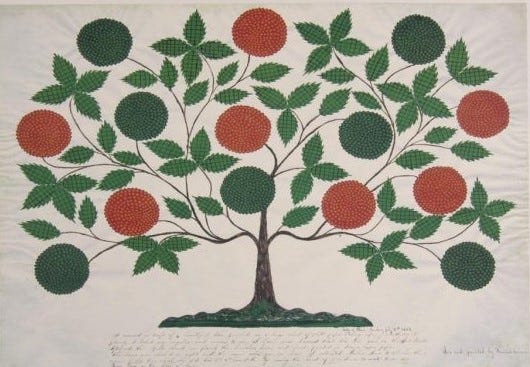
But for a movement that had so few members the Shakers have left all of us a huge cultural legacy. They are most commonly remembered for their distinctive simple but elegant architecture, artwork, and their finely-crafted furniture.
Unlike some other religious communities of the time, for example the Amish, Shakers readily embraced technological innovation. Although they did not seek patents for their own inventions, which they considered to be gifts to humanity from God that had been channeled through them, they are credited with having given us metal pen nibs, the flat broom, a prototype washing machine called a wash mill, the circular saw, waterproof and wrinkle-free cloth, the metal chimney cap for blocking rain, and they improved on the plow. Also, the screw propeller, an important alloy called babbitt metal, a rotary harrow, a turbine waterwheel, a threshing machine, the circular saw, and those the type of clothespins that are made out of single piece of wood that we sometimes still use today.

Shaker music
But besides love of God it was music that permeated Shaker lives and it is impossible to draw a distinction between their hymns and the songs they sang to accompany all of their everyday activities. It is not that all of their songs have religious lyrics; in fact many of their songs are mouth music with no lyrics at all. But all Shaker songs convey inspirational and uplifting messages.
Like all creativity, Shakers believed that the songs that came to them were divinely inspired and meant to be shared and passed along to others. For that reason Shaker music is well-documented as manuscripts of newly-composed songs written down, and sent from community to community. Thus, the texts and melodies of over 12,000 songs from the sect’s heydays in the early 19th century have survived (written in the group’s own distinctive archaic musical notation.) Also many of them continued within the oral tradition of the elders of the Sabbathday community. Many of their written songs have been transcribed into modern notation by musicologist Roger Lee Hall and the late Randy Folger, but others remain indecipherable to most people. I presume that new songs also continue to still being written by the dwindling population of remaining Shakers.

Perhaps it is because of this thorough documentation that Shaker music has not been the target for very many folklore song-catchers. And because so much of it might be considered to be religious music the genre has not drawn the attention of predominantly-secular folksingers. In fact, only one Shaker song is widely known by the general public – Simple Gifts, written and composed in 1848 and generally attributed to Elder Joseph Brackett of the former Alfred Shaker Village in Maine.
Simple Gifts was first brought to public attention in 1944 when composer Aaron Copland used its melody in his famous Appalachian Spring, a score commissioned for a Martha Graham ballet, and again in his 1950 set of Old American Songs. It got further attention when English songwriter Sidney Carter based the melody for his enduring song Lord of the Dance on it.
There are one or two other Shaker songs that may be vaguely familiar to some people and which may be familiar to some of you (since you probably wouldn’t gotten this far reading this long posting if you didn’t have a taste for esoteric folk music.) One of those is the last selection in this medley. See if it sounds familiar.
There is a lot of information about the Shakers online: There is even a wiki ShakerPedia. I particularly liked this brief article from a website about various religions, and this one written by a Shaker elder called Christmas Among the Shakers in the Olden Time. Here is a rather chaotic site that is all about Shaker music. It is very informative and includes a fairly comprehensive list of recordings of Shaker songs, and sources of transcriptions of their songs into modern musical notation.
The songs in this medley
Like many Shaker songs This Is Jesus’ Birthday is very brief. I got it from an out-of-print album called Joy of Angels, recorded in 1995, that includes 38 songs. The album was released by Sampler Records of Rochester, New York and is the only specifically Shaker Christmas album that have ever heard of (and sheesh, was it ever hard to track down!) It mostly has songs that are otherwise unrecorded. What a great find!
The Singer here is Mitzie Collins who established Sampler Records. The album had a companion book containing the music, text and background information written by Shaker musicologist Roger Hall. I don’t have that book but the liner notes say that this song was written in 1854 and is from the Shaker village of Pleasant Hill, in Kentucky. In the 1850s Pleasant Hill was the largest of the Shaker villages, with approximately 600 members and 250 buildings. It is preserved today as an historic site by the US National Park Service and operated by the Shaker Village of Pleasant Hill Society.
While the general public and even the folk music community has overlooked Shaker songs a few choral music directors have discovered this rich part of our collective musical heritage. Celestial Choir is performed here by The Boston Camerata. It is from their 1995 album Simple Gifts, which is entirely comprised of Shaker songs and was developed with the participation of the then eight members of the Sabbathday Shaker community. The songwriter of Celestial Choir is unknown but the song comes from a printed tunebook called A Sacred Repository of Anthems and Hymns dated 1852 and published by the former Canterbury Shaker community in New Hampshire.
The Boston Camerata always aims for authenticity in their performance style. In his liner notes music director Joel Cohen acknowledges the difficulty in doing that for music like this where the living tradition may vary from how songs were sung over 150 years ago. So I wasn’t surprised to see a special thank-you in the liner notes to the musicologist Robert Hall for his role in helping them with this project.
Cohen’s liner note for this song says: “Many songs express the Shakers’ firm belief in the world of spirits. The source [tunebook] ends each strophe of this hymn with the [symbol for] the ‘shaker shout’, a now-lost tradition we have tried to re-imagine in the present performance.”
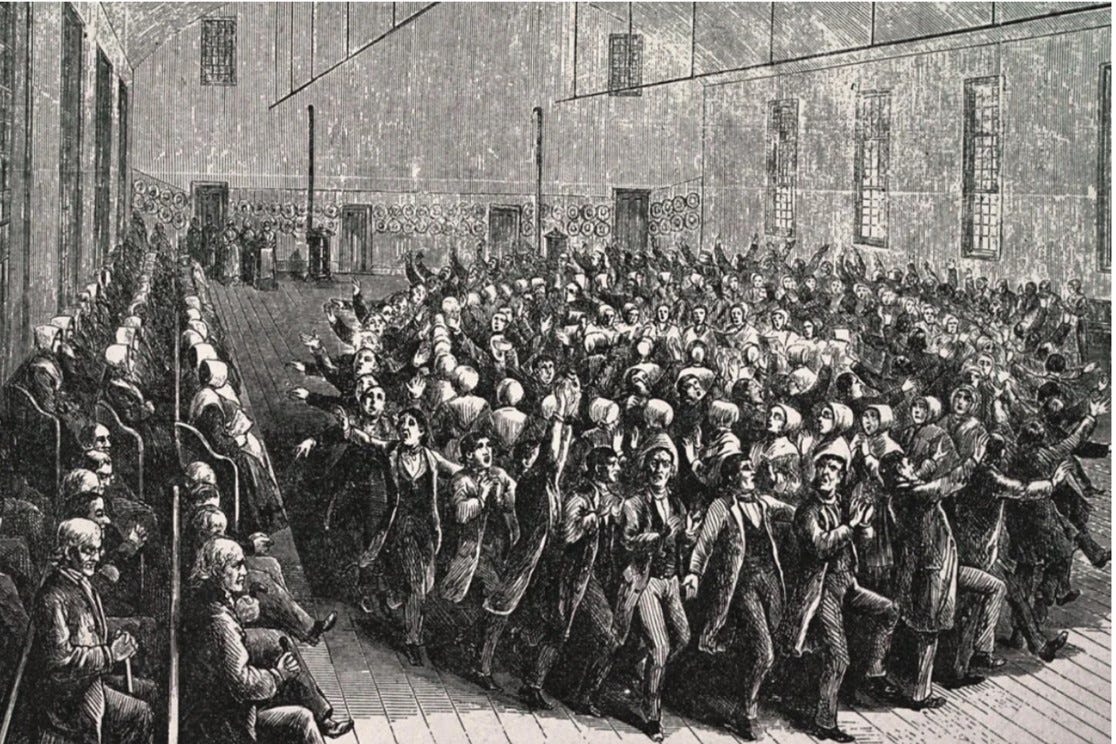
Circular march, recorded in 2000 on The Tudor Choir’s album gentle words, this isn’t really a Christmas song per se but it does represent the style of dance music that would have been used for celebratory occasions. I’ll let the above etching save me 1000 words of explaining how a Shaker circular dance worked. The writer and date of this composition is unknown but was a member of the Mount Lebanon, NY Shaker community.
The unaccompanied solo rendition of While once in Judah’s lovely land that follows it is another track from the Joy of Angels CD and is performed by the late Randy Folger. He was the long-time music director, music curator and presenter at the Pleasant Hill Shaker Village Historic Site. The song was written in 1815 by Elder John Dunlavy of the Pleasant Hill community and was almost certainly discovered and transcribed from the Shaker notation by him. (Actually, he could probably have sung it himself just as easily from the old notation but he strongly believed in promulgating Shaker music and was committed to transcribing it into modern notation before his untimely death in an auto accident.)
With Randy’s voice as a bridge I chose to immediately follow that piece with the mouth-music song A New Year, also from the Joy of Angels, in which Randy leads an ad hoc chorus assembled for the CD project. To my ears this sounds like it might be another circular dance march.
This medley ends with that other Shaker song that you might recognize. Give Good Gifts is of anonymous composition in the tunebook Original Shaker Music published by the Mount Lebanon collective in 1893. It is performed here by a quartet comprised of soprano Heather Cogswell, alto Linda Kachelmeier, tenor Jordan Sramek, and bass Tim O’Brien. It is from Minneapolis’ The Rose Ensemble’s now out-of-production 2008 album And Glory Shone Around.
Congratulations! You have now heard more Shaker songs than most people will hear in their lifetimes.









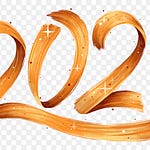

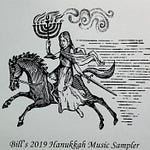
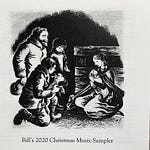

Share this post